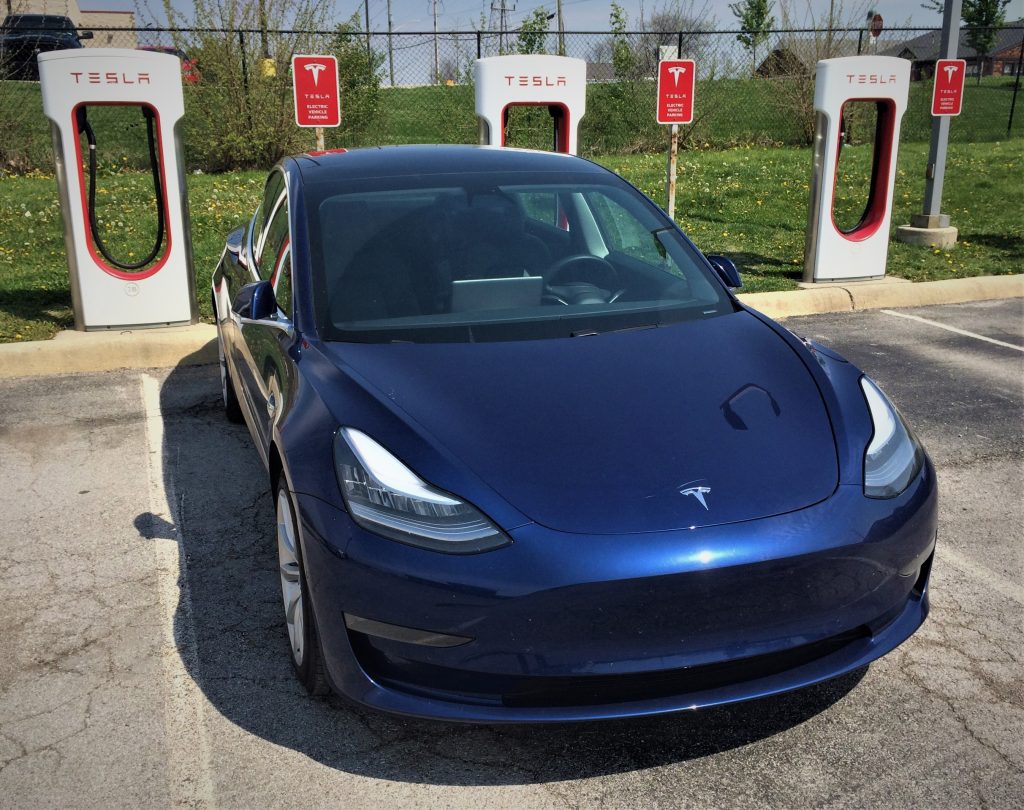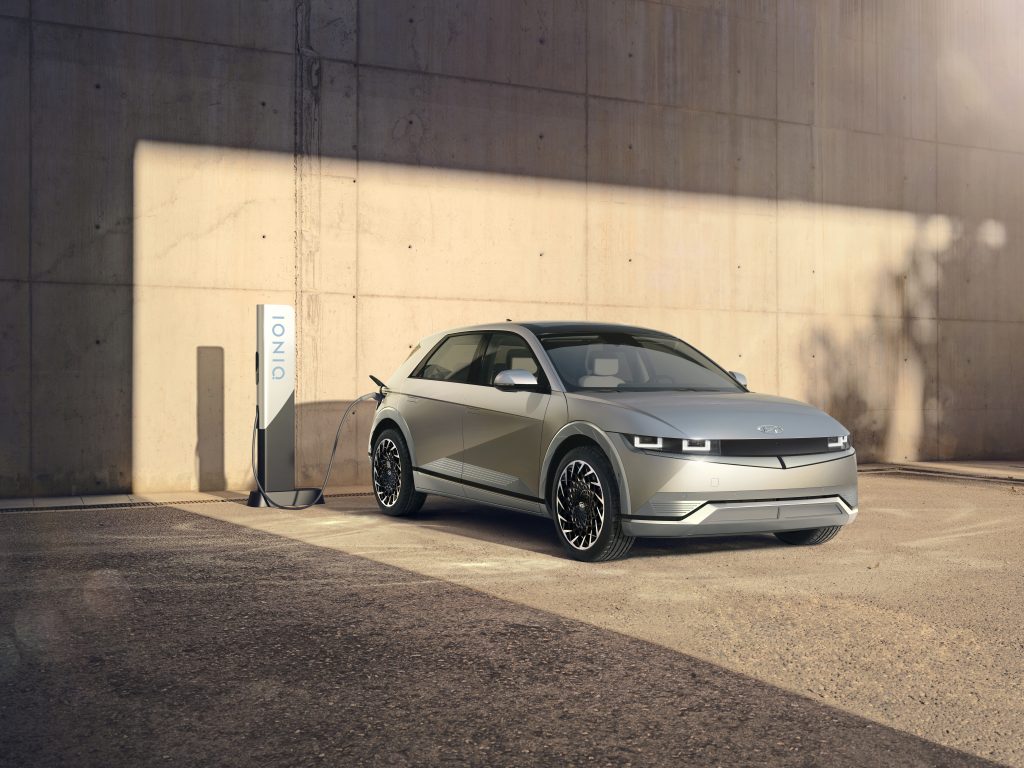
How long does it take to get a battery electric vehicle (BEV) up to full charge?
The answer is a rock-solid “it depends.”
And perhaps that’s one of the biggest hurdles to the mass adoption of electric vehicles—there’s no single answer to the charging time question. While technologies like regenerative braking and improved battery capacity have greatly enhanced electric vehicle range in the past few decades, range anxiety is still a very real issue that EV manufacturers must confront.
Charging time plays a major role in those efforts.
Yet the time an electric vehicle takes to get to a full charge varies significantly depending on the EV model in question and the type of battery charger used. This article will explore those factors and help you better understand some nuances behind the question of EV charging time.
What’s the Difference Between Level 1, Level 2 & Level 3 EV Chargers?
When you start researching EV battery chargers, you’ll notice that there’s a distinction made between charging levels. And there’s a big difference between each tier when it comes to EV charging time. Fortunately, it’s pretty easy to understand why—it essentially boils down to the charger’s electrical power output.
Level 1 EV Charging
Level 1 charging stations use typical household 120 volt AC power. You can simply plug into any one of the ordinary outlets you find in your garage or parking space. Level 1 EV chargers usually draw between 10 to 15 amps, which is about the same as a vacuum cleaner or hair dryer.
Again, charging times can vary depending on the vehicle, but a good rule of thumb is a Level 1 charger is something you plug in at night to let your EV charge while you sleep.
Good, but not great. Especially if you’re on a road trip, make a lot of daily trips, or have a long commute. That’s why Level 2 and Level 3 charging stations are so appealing.
Level 2 EV Charging
Level 2 electric vehicle chargers use higher 240 volt AC power—the same kind of voltage you’ll likely find in an ordinary household electric clothes dryer. With that extra voltage comes faster charging times. Instead of charging overnight, a Level 2 charger can bring an EV up to a full charge in just a few hours (depending on EV model).
That makes Level 2 charging very attractive to a lot of households. And while installing a Level 2 charger in a home garage requires a professional electrician, it’s not necessarily a difficult or terribly expensive job. Many find the benefits of shaving hours off each charging cycle far outweigh the upfront cost.
Level 3, DC Fast Charging & Tesla Superchargers
As you’d expect, Level 3 charging kicks things up another notch. You’ll often hear Level 3 charging referred to as “DC Fast Charging” because instead of alternating current (AC) like Level 1 or Level 2 charging, these chargers use direct current (DC), which is the same type of power an EV battery uses. That helps speed-up the charging process, since these chargers can skip the electric vehicle’s on-board AC/DC charging system and supply DC charging power directly to the battery.
While exact output can vary, DC Fast Charging can supply over 480 volts.
It’s important to note that, while Tesla Superchargers can be considered Level 3 EV chargers, they’re not universally compatible with every EV model. We won’t dedicate a whole lot of space to them in this story, because you can read an entire standalone article on Tesla Superchargers here.
The electrical power requirements and expense that these chargers demand means that you probably won’t find a Level 3 charger in a home garage. You’ll typically be able to spot Level 3 chargers at charging stations in shopping malls, airports, rideshare/bus lots, and at various strategic points along a highway—similar to traditional gas stations.
And that’s not a coincidence. The end game of electric vehicle charging is to replicate the familiar gas station experience with “fill ups” that take a matter of a few minutes. But we’re not quite there…yet.

How is EV Charging Performance Measured?
Well, that’s the tricky part. There’s no universal standard metric to quantify EV charging times, for now at least. It seems most manufacturers will go with whatever data points look the best in marketing materials.
For instance, Chevrolet often describes charging times for its Bolt EV in miles added per hour of charging time. In other words, how many additional miles in range does it get for every hour it’s hooked up to a charger.
Contrast that with Nissan. For its Leaf EV, it often uses the “hours to a full charge” metric. IE, how long it takes to get the EV to its full range when hooked up to a charger.
And it gets even more confusing when you see other EV manufacturers using “hours to an 80% charge” baseline—essentially telling you how long it’ll take an electric vehicle to reach a practical, usable charge.
Then, you’ve got to remember that charging times vary depending on charging tier (Level 1, 2, or 3) described above.
Finally, some electric vehicles boast different battery configurations, meaning that a Hyundai Ioniq, for instance, can have a different range depending on the number of battery packs it is equipped with.

Electric Vehicle Battery Charging Time: The Takeaway
So depending on the EV model, its battery setup, and the type of charger it’s hooked up to, exact battery charging times can be tough to pin down. A lack of a clear baseline standard for reporting EV charging times also makes it difficult to compare specific vehicles.
All this means that there’s no definitive answer to how long it takes to charge an EV.
But hopefully this article explained why and gives you some vital context that’ll be useful if you’re shopping for an electric vehicle.

[…] you read our earlier post on How Long Does it Take to Charge an Electric Vehicle, then you may already know our pithy initial response: It […]
[…] Before we dive in, you may want to read this article to familiarize yourself on the distinction between Level 1, Level 2 & Level 3 charging: How Long Does it Take to Charge an Electric Vehicle? […]
Thanks for adding EV articles to your gasahaulic site! There’s one big point missed here though about Level 1 charging. For an average commuter, Level 1 (1440 Watts, or about 7 mph of recovered range) will provide 56 miles during an 8 workday and another 84 miles if plugged in for 12 hours overnight. Who regularly drives 240 miles per day? The Level 1 EVSE (charging cable) supplied with EVery car, coupled with modern big battery EVs that have over 200 miles of range will fill the normal charging needs for the great majority of driving. DC fast chargers become only needed on road trips.